Draeger Dolphin Modifications
Part II
REMEMBER REBREATHERS CAN AND DO KILL!
IF YOU ATTEMPT TO MAKE MODIFICATIONS
TO YOUR SYSTEM, YOU DO SO AT YOUR OWN RISK. YOU HAVE BEEN WARNED.
With more than 170 hours and 190 dives on the system, I have encountered a
few problems. I have had O2 sensors fail before, during and after dives. My O2
sensor supplier Patrick Duffy of www.oxycheq.com
likes rebreather divers. It seems that the normal 2 -3 year life encountered with
most O2 analyzers just isn't applicable to rebreathers. One can only expect about
100 hours or so at the higher PO2's encountered in the loop. I have had orifices
block, OC bail-out free flow, CO2 hits, collapsed hoses, even a partial flood, kind of all
the normal stuff. However, considering the number of dives, I have had fewer aborted
dives than my OC buddies, especially in cold water. You just can't put a price on
warm, moist air and never a hint of cottonmouth.
I have gone back to the sonic orifice for the O2 feed. Even with the
higher risk of blockage a small orifice presents, I feel more comfortable with them than
the flow restrictors. I just carry an extra in my spare parts kit. Since
installing the hydraulic connectors, I have had no problems with the orifices, but then I
do few salt water dives.
In an attempt to further streamline the system, I have
made some changes. These changes also allow conversion to semi-closed operation on the fly
with the addition of a coupling converter. I followed this route to avoid crossing
the O2 and diluent systems.
As with the generation 4, diluent/deco gases can be switched on the fly
by the use of the hydraulic connectors. I have had good luck with these
connectors. They are holding up well. The main changes concern simplifying all
the extraneous stuff. It appears to be about as minimal as it can get and still keep
all the attributes I need from a system to accomplish deep and cave diving in a semblance
of safety.
I was having trouble with various 1st stages not holding up with
elevated IP's. Most regs do not like 16 - 17 bar IP. They tended to leak after
a while. I added a IP gauge to the system to monitor the IP and was able to see it
happen several times. I even managed to ruin a couple gauges. I have since
modified my Draeger Dolphin 1st stage (retapped the holes for 3/8 -24) to accept normal
hoses. The Dolphin 1st stage will creep if there is no flow, as will most. But
it was designed for the higher IP and has been much more reliable. I therefore added
a over-pressure relief valve to the unit to prevent a hose failure. (It is only a
problem if the O2 injector is not connected). So far, this has done the job.
Below are some detail photos of the system. The current layout
allows for a clean left side for the transport of stage cylinders. The stages serve
back-up deco supply as well as ADV use during deco. Again the various stages can be
connected to the ADV to change the supply or diluent mix for the different phases of the
dive. In all cases, if everything thing works fine, you have enough gas to do a
weekend of deep diving and at anytime you can switch to open circuit and still finish the
ascent albeit open circuit. It is just as heavy as a set of doubles. The
difference is the whole weekend's supply is there with the associated cost savings.
|
Click picture to view enlargement.
Use browser back key to return.
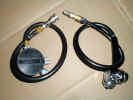
ADV |
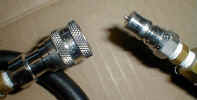 Close
up of connectors |
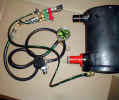 Overview of O2 injection |
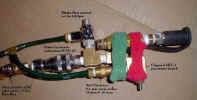 Close up of O2 injection manifold
|
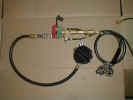 Overview of SCR conversion |
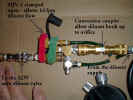
Close up of SCR converter |
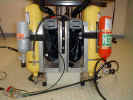 Assembled unit - Notice the ADV moved to side |
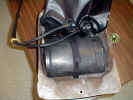
PO2 sensors in bag |
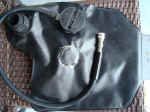 Modification
to CL and ADV |
|
|
I also have discovered that the cage is an excellent platform for
cylinder variations. During the warmer months I removed the two 7 l cylinders and
replace one with a 4 l cylinder and the other with the 2 l oxygen cylinder. They
were held on the cage with a standard cam strap. For open water that was a real nice
configuration. With the cylinders filled, I could do five hours of bottom time and
still have enough diluent to abort a standard recreational dive of 30 - 40 msw. The
beauty is that it weighs no more than a standard OW system and your whole weekends worth
of gas is on your back. Kerry McKenzie uses his system in this manner. I don't
often have the luxury of diving this way. I am landlocked where the water is always
cold below about 7 mfw
BACK







